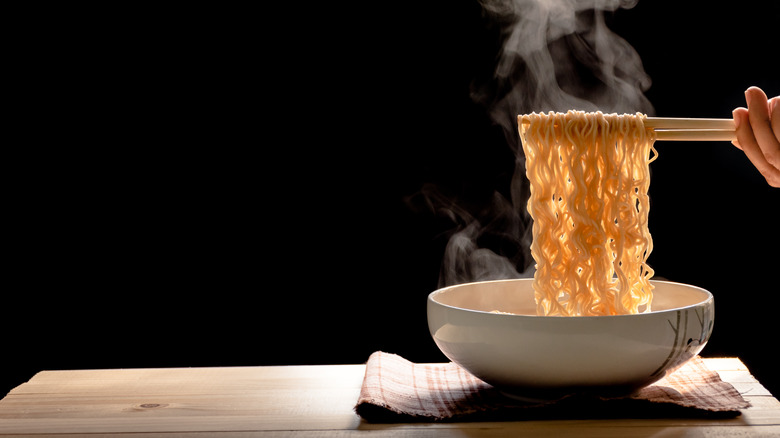The Best Time To Add Noodles To Your Homemade Ramen
Most folks are fine just reaching for a package of the perfect instant ramen or calling in for takeout when the mood strikes. If you're ready to upgrade your ramen though, it's best to make sure it's done properly.
One of the best things about ramen is that it is endlessly customizable (via Real Simple). Making your own broth at home allows you to put a personal spin on traditional Japanese flavors, and build a ramen bowl that is entirely yours. A great place to start is to decide on what broth variety you will use. That starts with deciding on vegetable, chicken, beef, pork, or other bases. Some of these will be better suited to light, or chintan broths, while heavier broths like pork or beef will make for luscious paitan bases.
According to Real Simple, the next step is to decide which salt application and flavor you'll use. Some of the most common are shoyu (soy sauce), miso (fermented soybean paste), or shio (sea salt). These each have their own flavor and are best suited to different broths. Half the fun of making your own ramen though is to experiment with different ingredients. Of course, ramen is only complete with noodles.
Add fresh noodles just before serving
The most important thing to remember when working with fresh, frozen, or homemade ramen noodles is that they are not meant to be cooked in the broth. While most instant packages will tell you to throw the dried noodles into the broth to cook, fresh noodles have a different process. According to Real Simple, instead, they should be boiled in water for one or two minutes before adding them to the final broth. Myojo notes that this keeps the noodles from getting too soggy.
Ramen is best served piping hot and cooled down with a loud slurp. This is partially because the noodles will soak up too much of the broth if they're left to sit, and their texture will be ruined. Ramen noodles are traditionally made in a kansui, which is an alkaline solution that gives the noodles their signature yellow tint. It also keeps them from dissolving in the water while they're cooked and gives them their signature elastic bounciness. If noodles are cooked in the broth, they'll start to soak up the fluid as well, leaving you with less of that flavorful broth that you've been crafting.

